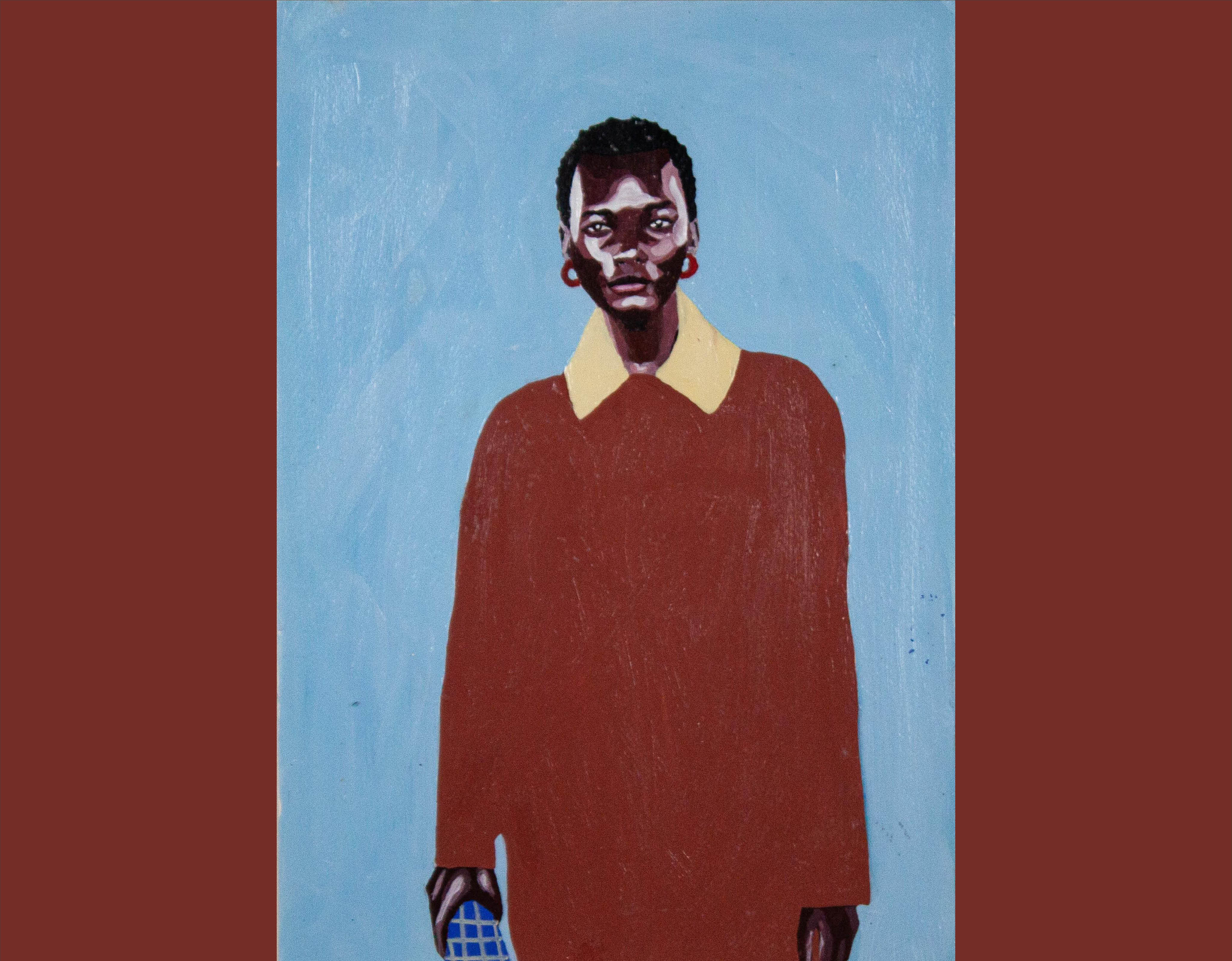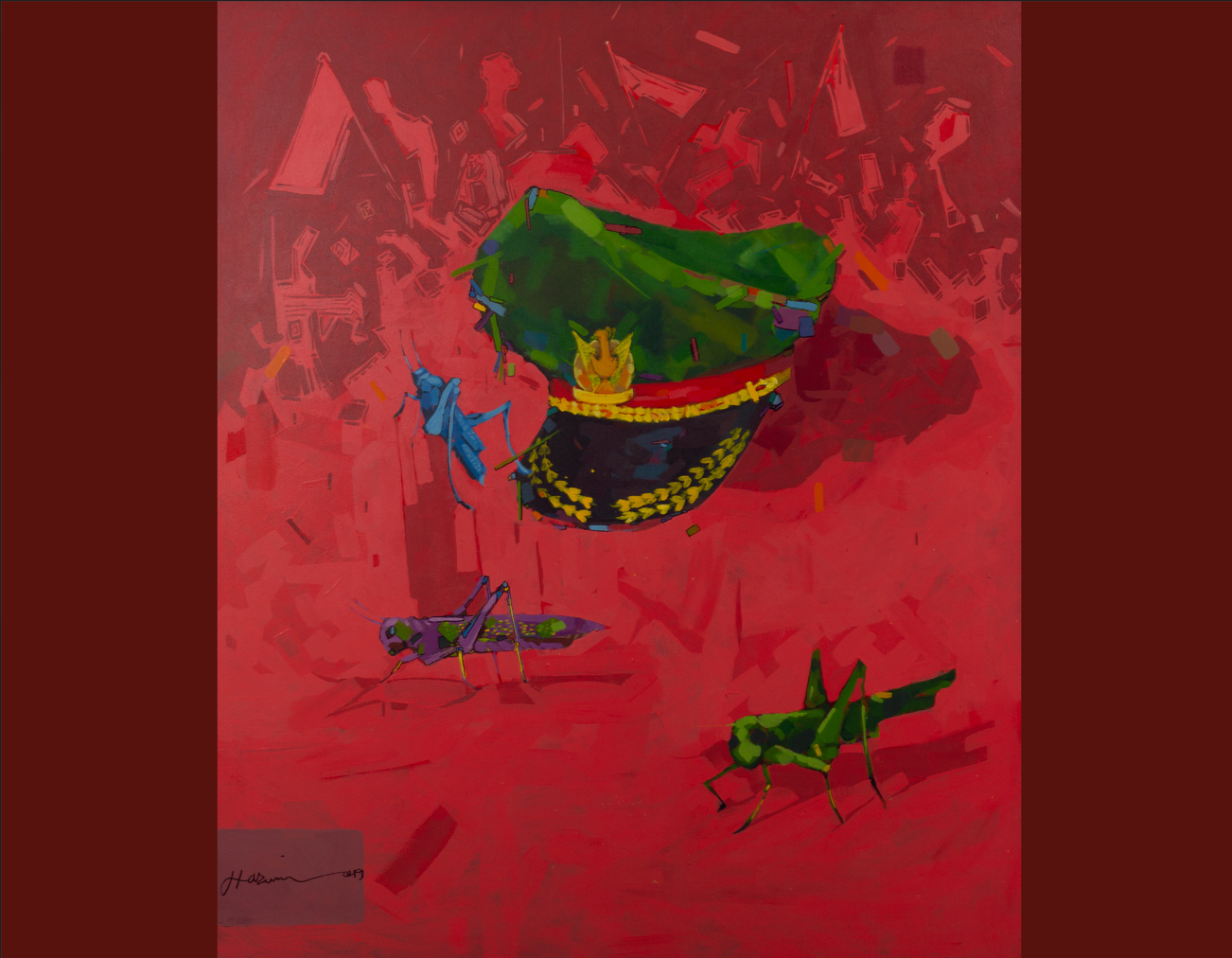An interview with Lynette Musukubili

An interview with Lynette Musukubili
By Martha Mukaiwa
Found and sourced plastic are the raw materials of visual artist Lynette Musukubili’s (b.1995) abstract and arresting crocheted tapestries. The recipient of a diploma in visual arts from the University of Namibia, Musukubili weaves stories from her cultural village into upcycled textiles as she strives to make her mark in Namibia’s capital city.
In Musukubili’s tapestry scenes, there are memories of homes with just one light bulb, bright starry nights, the work of picking mutete, a nutritious leafy green plant, and abstract images of sitting around a fire. While Musukubili’s wall-hangings are a celebration of her simple but relatively idyllic experiences in the Namibian village of Bukalo, the artist also creates sculptures rooted in the traditions of basket-weaving. The technique is an homage to her mother who learnt the method from her grandmother.
Musukubili additionally employs her artworks as a reflection of the challenges of being a young woman in Namibia, a nation plagued with staggering rates of sexual and gender-based violence against women and girls. The artist held her debut solo exhibition at The Project Room in Windhoek in 2023 and has been featured in group showings at Cape Town’s Association for Visual Arts (AVA), Investec Cape Town Art Fair, SMAC Gallery and RMB Latitudes Art Fair (Johannesburg).
Primarily working from her home in Windhoek, Musukubili appreciates art as way to communicate her thoughts and feelings. “As someone who finds it hard to express myself verbally, art gives me a chance to share my expressions with the world,” she says. “And at the same time, art gives me a sense of purpose.”
Martha Mukaiwa speaks with the artist for ARAK.

Why do you make art, and when did you first start making art?
Art is a way to express my thoughts and feelings and I find crocheting very therapeutic as well. It’s hard to tell when exactly I started doing it, but I became fully invested in art in 2018 when I started studying art.
What would you say is original about your work, and how do you reconcile influence and innovation?
What is original about my art comes from my personal experiences, the reality in which I live, the way in which I see and understand the world. Although I cannot help but be influenced by what is around me, the artwork is created by the techniques that were passed down from my mother and grandmother.
Tell us a bit about your training. Are you self-taught, shaped by institutional values?
I did a Diploma in Visual Arts at the University of Namibia and my work is a mixture of traditional techniques such as basket weaving as well as modern elements of crocheting which I learned from my mom. There is an exploration and interplay between cultural heritage and abstract art.
What are some of the key themes, colours, materials and interests animating your work?
My work is mostly made from plastics. Usually, I tend to create artwork about my personal experiences, what I observe around me, within the community and within my own family. I have noticed that I gravitate more towards the stories of the women around me.

What do you think is the relationship between art and society?
Art is a reflection of the society we live in, every piece of art has a story behind it. Art is a form of storytelling and those stories can reflect on cultural values, social issues, technological growth and your personal experiences.
What does the term 'Contemporary African Art' mean to you?
Contemporary African art, to me, is the way we as African artists express ourselves, and contemporary life though art, telling and putting our stories out there through art.
What role do you think art institutions play in shaping the discourse around Contemporary African Art?
Art is a universal language that can bring people and cultures together. Having these institutions gives artists the confidence and space to express their art, share and appreciate culture and, through discussions, have their artworks understood better.
Do you see a relationship between art and activism within the context of Contemporary African Art?
Yes, art can be used as a tool for activism to get a message across to change people's views and bring certain subjects to light by expressing our views, feelings and telling stories though art.

How does geopolitics factor into the making of art?
Your environment can be a huge factor in how you create artworks and how you express yourself, because some ways of expression can be seen as problematic depending on where you are from. So, it can cause you to be less expressive and more reserved with your artwork. Support can also be limited.
Do you have a sense of your audience? How important is the consideration of an audience when making art?
Not really, it's just me expressing myself and telling my story.

What role do you think criticism/art writing plays in the contemporary art market? What does it mean for your own practice?
It connects the viewer to the artists and helps the artist express their art better and gives me, as an artist, and also the viewer a different perspective. It helps both the artist and the viewer understand the value of art.
This interview has been edited for brevity and clarity.
.svg)


.svg)
.svg)
.png)

